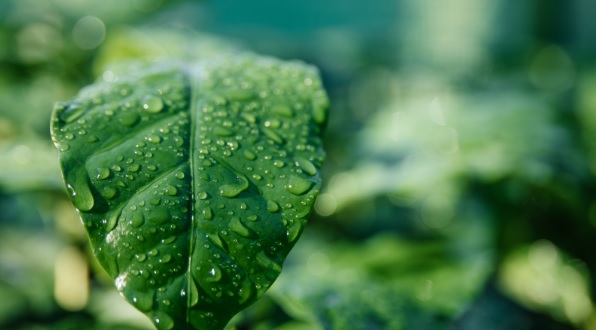Foliar fertilization plays a key role in crop nutrition by providing an efficient way to deliver nutrients directly through plant leaves.
It is a widely used strategy in crop nutrition and its importance has been increasing worldwide. Studies have shown that this technique can improve the quality and increase the yield of crops, in addition to solving problems associated with soil fertilization such as nutrient fixation and other processes that limit their availability [1].
It is considered a complement to soil fertilization and its use has been recorded since 1844, although its origins date back to the Babylonian era [3]. It consists of applying nutrients directly to the plant’s leaves, which allows rapid and efficient absorption. Nutrient uptake through leaves can be more effective than soil applications, which highlights the importance of foliar fertilization in crop nutrition [2].

It is important to highlight the benefits of foliar fertilization in improving crop quality and increasing crop yields. This practice allows for a precise application of nutrients, maximizing their availability to plants. In addition, it offers a solution to solve problems such as nutrient fixation, immobilization and volatilization. An article by Fregoni (1986) highlights the ability of foliar fertilization to overcome these challenges and optimize crop nutrition [2].
It has become an essential tool in modern agriculture due to its potential benefits. Also, this technique can be a more environmentally friendly option compared to soil fertilization, as it reduces the exposure of nutrients to factors such as soil erosion and runoff.

The choice of substrate also plays a key role in foliar fertilization. As mentioned above, studies have found significant differences in foliar nutrient concentration depending on the substrate used. By selecting the right substrate, nutrient levels can be optimized and thus promote healthy plant growth.
The use of fulvic acid and amino acids in foliar fertilization will allow you to enhance the growth and development of your crops. These raw materials offer key benefits, such as improved nutrient absorption, micronutrient transport and stimulation of plant metabolism. Be sure to follow the recommended application and dosage instructions to get the best results for your crops.
At MYCSA AG, you will find the raw materials you need for your crops. We have a wide range of products that can be foliar applied, which will allow you to supply the necessary nutrients to your crops. You may also be interested in information about biofertilizers, which are designed to improve quality and yield in a natural and sustainable way.
References:
[1] Victoria Fernandez, Thomas Sotiropoulos, and Patrick Brown (2015). Foliar fertilization. Scientific principles and field practice. Available at: https://acortar.link/XoB5hx
[2] Trejo-Téllez, Libia Iris; Rodríguez-Mendoza, Ma. de las Nieves; Alcántar-González, Gabriel; Vázquez Alarcón, Antonio. Specific foliar fertilization to correct nutrient deficiencies in three types of soils.Mexican Society of Soil Science, A.C. Chapingo, Mexico. Available at:https://www.redalyc.org/pdf/573/57321307.pdf
[3] Trinidad Santos, Antonio; Aguilar Manjarrez, Diana Foliar fertilization, an important support in crop yield. Mexican Society of Soil Science. Chapingo, Mexico. Available at https://acortar.link/wnh6nI

